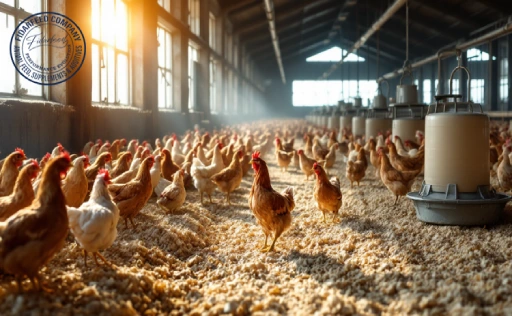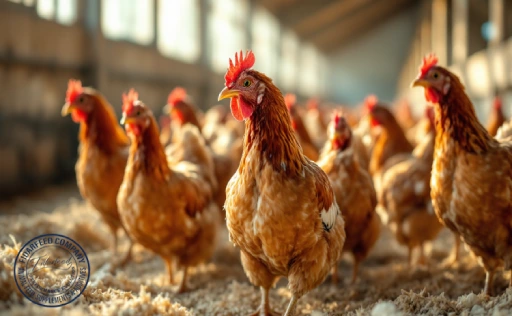Introduction: Why Classica Layer Chickens Are a Game-Changer for Egg Production
Egg production with Classica Layer Chickens is rapidly gaining attention among poultry farmers—and for good reason. In an era where efficiency, consistency, and quality matter more than ever, Classica layers are emerging as the top choice for breeders aiming to boost performance and profitability. Whether you’re an experienced producer or just getting started, understanding what sets Classica chickens apart can be the first step toward transforming your flock’s productivity. Let’s dive into why this breed is becoming a cornerstone in modern egg farming.
Understanding Classica Layers: What Makes Them Special?
Classica Layer Chickens are selectively bred for superior egg production, feed efficiency, and adaptability. Their genetics are tailored for high-yield performance while maintaining robust health.
Learn more about: Active Probiotic Yeast for Poultry
Unlike some other breeds that may require intensive management, Classica birds are known for their calm demeanor and ease of handling. Their strong feed-to-egg conversion ratio means that they produce more eggs with less feed, reducing overall costs. Moreover, these birds are resilient to a range of climates and farm conditions, making them ideal for breeders in both intensive and semi-intensive systems.
Top Benefits of Boosting Egg Production with Classica Layer Chickens
When farmers switch to Classica Layer Chickens, the difference is clear. Breeders often report a significant uptick in daily egg counts within just a few weeks of introduction. The eggs themselves tend to have stronger shells, richer yolks, and consistent size—all features that fetch better prices at market. The production cycle of Classica layers is longer than average, often stretching well past 80 weeks without a major drop in output. This longevity, combined with a lower mortality rate, means better returns on investment over time.
Learn more about: The Chicken Egg Production Cycle: A Comprehensive Overview
How to Optimize Egg Production with Classica Layer Chickens
Getting the best out of Classica layers requires a thoughtful, balanced approach. First, ensure that housing conditions are clean, well-ventilated, and appropriately lit. Light plays a crucial role in stimulating laying cycles, and Classica chickens respond particularly well to consistent lighting schedules.
Learn more about: Smart Chicken Waste Management: Sustainable Solutions for Poultry Farmers
Temperature control is equally important. These birds perform best in moderate temperatures, so invest in cooling or heating systems if needed. Provide ample space to prevent stress and pecking, and consider enriching the environment with perches or dust baths to promote natural behaviors.
Feeding Strategies to Maximize Egg Output in Classica Layers
Feeding is where many breeders either make or break their productivity goals. Classica chickens require a balanced diet rich in proteins (16-18%), calcium, phosphorus, and essential vitamins. Layer pellets specifically formulated for high-production breeds work best.
Learn more about: The Egg Production Cycle: From Laying to Market
Adding natural supplements like oyster shells for calcium or probiotics to support gut health can further enhance performance. Feed should be offered consistently and monitored for waste. Some farms have successfully implemented split feeding—providing one type of feed in the morning and another in the evening—to match the bird’s metabolic needs.
Health and Disease Prevention: Keeping Your Classica Layers Productive
A healthy flock is a productive flock. Classica layers are known for their resilience, but they still require proper biosecurity and veterinary care. Regular vaccinations, parasite control, and monitoring for early signs of illness are essential.
Learn more about: 10 Effective Methods to Control Temperature in Layer Chicken Housing
Clean drinking water should always be available, and waterlines must be flushed regularly to prevent buildup of harmful bacteria. Implementing footbaths at barn entrances, rotating pasture areas, and isolating new birds for observation can drastically reduce the risk of disease introduction.
Comparing Classica Layers with Other Popular Breeds
How does Classica compare to other breeds like ISA Brown, Hy-Line, or Lohmann? While those breeds are well-regarded, Classica often edges ahead in key areas like feed efficiency, egg quality, and stress tolerance. For instance, a comparative study in Eastern Europe showed that Classica layers produced 5-8% more Grade A eggs per hen annually.
Learn more about: How Proper Lighting Improves Egg Quality and Production in Layer Hens
Moreover, their adaptability makes them less susceptible to performance drops during seasonal transitions—a major plus for farms operating in varied climates.
Common Mistakes to Avoid When Raising Classica Layer Chickens
Even the best breeds can underperform if not managed properly. One common error is underestimating their nutritional needs. Using generic or low-quality feed can drastically reduce laying potential. Another mistake is overcrowding, which can lead to stress, feather pecking, and lower egg counts.
Learn more about: Growth Stages from Chicks to Laying Hens
Neglecting lighting schedules is another oversight. Inconsistent lighting can confuse the birds’ internal clocks and disrupt their laying cycles. Lastly, skipping routine health checks might save time initially but often results in higher costs down the line.
Real Success Stories: How Breeders Are Achieving More Eggs with Classica Layers
Farmers across the globe are seeing real, measurable success with Classica layers. A cooperative in Brazil reported a 20% increase in egg production and a 10% drop in feed costs after switching to Classica chickens. “It changed the economics of our operation,” said the farm manager. “We’re now producing more with less, and that’s the dream.”
In Kenya, a small-scale breeder shared that her daily egg count went from 80 to 110 within two months. “I was skeptical at first, but Classica layers exceeded my expectations. They adapted quickly and gave me consistent results.”
Conclusion: Take the Next Step to Higher Yields with Classica Layer Chickens
If you’re serious about improving your flock’s performance, investing in Classica Layer Chickens could be your smartest move yet. From their outstanding egg yield and hardiness to their cost-effective feeding and long laying cycles, these birds offer a complete package for both novice and experienced breeders.
The path to higher productivity is paved with the right choices—and choosing Classica is one of them. Ready to transform your egg production strategy? Leave a comment below, ask your questions, or share your own Classica success story. Let’s grow together!








